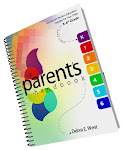8 Ways Technology Is Improving Education: Part 1
8 Ways Technology Is Improving Education
Part 1
November 22, 2010 by Sarah Kessler
Don Knezek, the CEO of the International Society for Technology in Education, compares education without technology to the medical profession without technology.
“If in 1970 you had knee surgery, you got a huge scar,” he says. “Now, if you have knee surgery you have two little dots.”
Technology is helping teachers to expand beyond linear, text-based learning and to engage students who learn best in other ways. Its role in schools has evolved from a contained “computer class” into a versatile learning tool that could change how we demonstrate concepts, assign projects and assess progress.
Despite these opportunities, adoption of technology by schools is still anything but ubiquitous. Knezek says that U.S. schools are still asking if they should incorporate more technology, while other countries are asking how. But in the following eight areas, technology has shown its potential for improving education.
1. Better Simulations and Models
While a tuning fork is a perfectly acceptable way to demonstrate how vibrations make sound, it’s harder to show students what evolution is, how molecules behave in different situations, or exactly why mixing two particular chemicals is dangerous.
Digital simulations and models can help teachers explain concepts that are too big or too small, or processes that happen too quickly or too slowly to demonstrate in a physical classroom.
The Concord Consortium, a non-profit organization that develops technologies for math, science and engineering education, has been a leader in developing free, open source software that teachers can use to model concepts. One of their most extensive projects is the Molecular Workbench, which provides science teachers with simulations on topics like gas laws, fluid mechanics and chemical bonding. Teachers who are trained in the system can create activities with text, models and interactive controls. One participant referred to the project as “[Microsoft] Word for molecules.”
Other simulations the organization is developing include a software that allows students to experiment with virtual greenhouses in order to understand evolution, a software that helps students understand the physics of energy efficiency by designing a model house, and simulations of how electrons interact with matter.










1 comments:
This blog is nice and amazing. I really like your post! It's also nice to see someone who does a lot of research and has a great knack for writing, which is pretty rare from bloggers these days.
Thanks!
Post a Comment